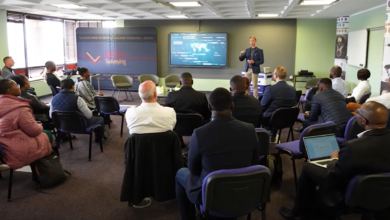
There are continuing debates regarding Capex and Opex in mobile networks as well as the particular sensitivity of mobile network systems to the RF connectivity employed.
 Cross-sectional view of compression connector before and after compression
Cross-sectional view of compression connector before and after compression
The latter merits an increased focus as networks grow in complexity and performance requirements, and the cost of operation is under increased scrutiny. It is becoming increasingly apparent that the quality of the RF path between radio and antenna, although a small part of the capital outlay, has a huge impact on the network performance and hence its revenue potential.
Moving into the second decade: general trends
Over the last decade, voice ARPU has fallen by more than 60 per cent. This is accelerated today by the massive buildout activity in developing countries. The market has generally reacted by driving the capex costs down and commoditizing the components used.
More recently there has been an increased focus on the total cost of ownership (TCO) and specifically the costs of operation. The cost and impact of power consumption were regarded as insignificant in the past and are now a top priority for the mobile operator. This is addressed today by reducing the losses incurred by RF feeders, or shortening the RF feeder path by installing active equipment at the top of the tower. Several initiatives are progressing using solar powered BTS sites. This further reduces the need of diesel powering of remote sites where no mains network is available.
Equally, tower loading is becoming an issue of concern. As more and more services are added to existing sites, the mast approaches its maximum loading capacity, or more costly masts need to be dimensioned to accommodate the load. Lighter and leaner solutions are sought for accordingly.
Another increased focus is the cost of maintenance. This can broadly be classed into preventative maintenance and recovery maintenance. In the case of the former, experience in the field dictates what costs are entered into routine procedures. Recovery maintenance is an unpredictable cost. It requires that the cause of a failure or performance degradation is identified and rectified.
Beyond what has been mentioned above, environmental or health-related considerations have migrated from their origins in the power and automotive industry into the telecom industry, playing a significant role today. Examples of these are site-sharing to reduce energy consumption, energy radiation and visual impact on the environment, directives on the return of waste materials after end-of-life and directives concerning the use of hazardous materials, notably lead (RoHS).
Last but not least, as the density and traffic throughput of wireless networks increase, so do the performance criteria of the network. Data ARPU, although still a small fraction of voice ARPU today, is increasing by over 100 per cent per year and will come to dominate revenue streams in the future. Despite the many constraints listed above, the operator must enable and enhance his data ARPU at all costs and thus cannot afford to permit any solutions which compromise network performance.











